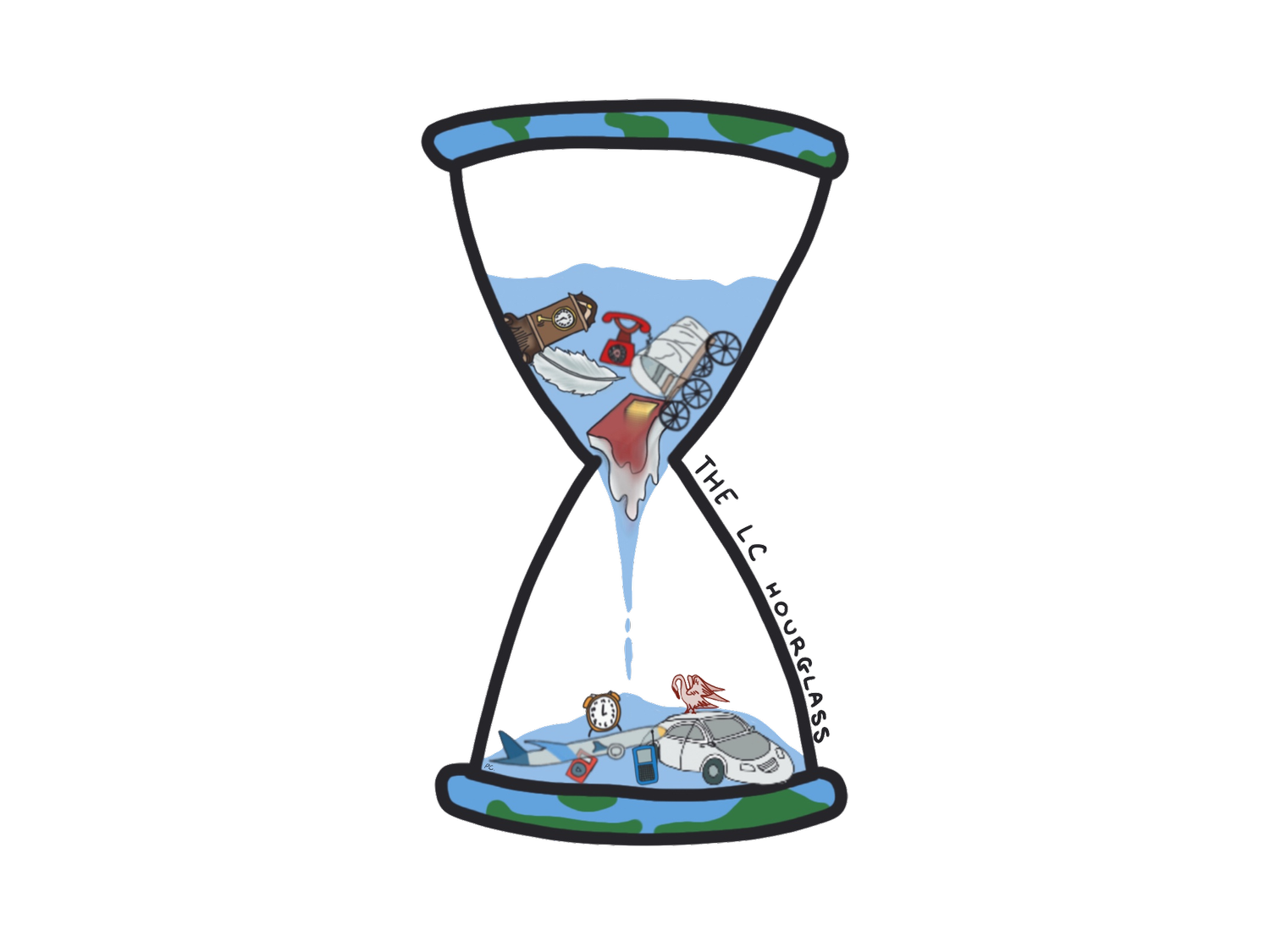China’s One Policy in Retrospect: How it Permanently Warped a Nation’s Ideals
By George Mirgorodskiy, 2026
Despite its 36-year lifespan coming to an end eight years ago, the effects of China's one-child policy continue to reverberate through the nation, leaving a painful and complex legacy on economic structure, social dynamics, and the minds of the people affected by it. The one-child policy was a rule instituted by the ruling party of China, the CCP, in 1979, which, with some limited exceptions, capped the number of children families could have to one. This implementation was the CCP’s primary response to the soaring maternity rate and population in the 60s, with many advocates pushing the narrative that it was better for the environment of the country to have fewer people.
For much of China’s modern history, it has contained a comparably vast share of the world’s population, with an average of around 26% over the past two millenniums, only recently dropping below this percentage. This dominance has allowed China to advance by virtue of pure manpower, becoming the manufacturing powerhouse that it is today, responsible for more than 28% of the world’s manufacturing output. However, with the lowered birth rates that were essentially forced onto the public by the one-child policy, there are fewer people of working age and fewer people to have children, creating a cycle of lowered working population, which risks dethroning China from its infamous title as it currently relies on its population to produce such results. This fear has been the primary motivator for the current increase to a maximum of three children per couple in a desperate attempt to replenish the aging population with more young, driven people.
While the Chinese government asserted that family planning was a shared responsibility between spouses, it was predominantly women who bore the brunt of the policy's repercussions, with penalties and consequences disproportionately affecting them. Forced abortions, invasive contraception such as IUDs, and even forced sterilization were practiced as ways to enforce the policy, which all inequitably oppress women. In addition, there is another phenomenon that principally affects women brought about by the combination of Chinese cultural norms and the one-child policy—heihaizi, or “black children.” Heihaizi are undocumented children that are not registered in the family’s name household, which is how people are identified in China. This registration is reminiscent of a social security number in the US, a lack of which impedes people’s ability to access education, healthcare, and employment. This phenomenon is depressing on its own, but when a certain aspect of Chinese culture, the succession of the family depending solely on male heirs, it becomes truly heartbreaking. Once only one child was allowed by law in 1979, families began only registering their one male child with the household to conform to societal expectations. This unfortunately happened even if the female or females were older, severely hindering many female children from functioning in society.
While the one-child Policy does remain in most peoples’ memories, for many, it goes much deeper even though the old policy has been withdrawn. Furthermore, the Chinese government has provided a multitude of incentives for people to have children—(tax breaks, cash rewards, subsidies, etc.)—but it hasn’t been enough. Propaganda campaigns have also been started, urging the population that it is their “duty” as citizens to have children to avoid the downfall of their state, referencing the importance of a large workforce for the Chinese economy. These efforts has not been enough to override the decades of propaganda and law that were drilled into everyone’s heads which entirely comprised of the exact opposite viewpoint to what is being pushed now. As such, while the societal expectations have changed from the government, the people’s norms have mostly stagnated as the population continues to abstain from parenthood.
On a concluding note, while the one-child policy in China was only meant to quell the surge in births during the 1960s, when the birth rate soared to over 6 children per mother, nobody could have imagined the jeopardy that the policy brought upon several aspects of Chinese society, most strikingly the lack of workers in the present day.
Works Cited:
Stevan, Wang Yuesheng, Han Hua, Gonçalo D Santos, and Zhou Yingying. “Fertility Decline in Rural China: A Comparative Analysis.” Journal of family history, 2011. https://www.ncbi.nlm.nih.gov/pmc/articles/PMC3968812/.
Wortham, Andrew. 2007. “Issues and Trends in China’s Demographic History | Asia for Educators | Columbia University.” Columbia.edu. 2007. http://afe.easia.columbia.edu/special/china_1950_population.htm.
Noboa, Rut. 2021. “China’s Demographic Challenges: The Long-Term Consequences of the One-Child Policy. Global Affairs - Global Affairs and Strategic Studies.” Global Affairs and Strategic Studies. June 30, 2021. https://www.unav.edu/web/global-affairs/chinas-demographic-challenges-the-long-term-consequences-of-the-one-child-policy.
McDonell, Stephen. 2021. “China Allows Three Children in Major Policy Shift.” BBC News, May 31, 2021, sec. China. https://www.bbc.com/news/world-asia-china-57303592.
Ning, Ni, Jingfei Tang, Yizhou Huang, Xiangmin Tan, Qian Lin, and Mei Sun. 2022. “Fertility Intention to Have a Third Child in China Following the Three-Child Policy: A Cross-Sectional Study.” International Journal of Environmental Research and Public Health 19 (22): 15412. https://doi.org/10.3390/ijerph192215412.
Sotamayor, Kristal. 2020. “The One-Child Policy Legacy on Women and Relationships in China.” Independent Lens. February 5, 2020. https://www.pbs.org/independentlens/blog/the-one-child-policy-legacy-on-women-and-relationships-in-china/.
“Fears of Inheritance Disruption: Tracing the Practice of ‘Establishing Heirs’ in Ancient and Early Imperial China.” n.d. Harvard-Yenching Institute. Accessed November 5, 2023. https://www.harvard-yenching.org/events/fears-of-inheritance-disruption/#:~:text=It%20is%20widely%20acknowledged%20that.
Li, Shuzhuo, Yexia Zhang, and Marcus W. Feldman. 2009. “Birth Registration in China: Practices, Problems and Policies.” Population Research and Policy Review 29 (3): 297–317. https://doi.org/10.1007/s11113-009-9141-x.
“Building a Better Future.” 2008. SecEd 2008 (4). https://doi.org/10.12968/sece.2008.4.1160.
Reuters. 2023. “Factbox: How China Is Seeking to Boost Its Falling Birth Rate.” Reuters, January 17, 2023, sec. China. https://www.reuters.com/world/china/how-china-is-seeking-boost-its-falling-birth-rate-2023-01-17/.
“China’s Propaganda Journey from ‘Only One Child Is Good’ to the Three-Child Policy.” 2021. Quartz. June 7, 2021. https://qz.com/2015205/chinas-propaganda-journey-from-one-child-to-three-child-policy.
Harrell, Stevan, Wang Yuesheng, Han Hua, Gonçalo D. Santos, and Zhou Yingying. 2011. “Fertility Decline in Rural China: A Comparative Analysis.” Journal of Family History 36 (1): 15–36. https://www.ncbi.nlm.nih.gov/pmc/articles/PMC3968812/.
